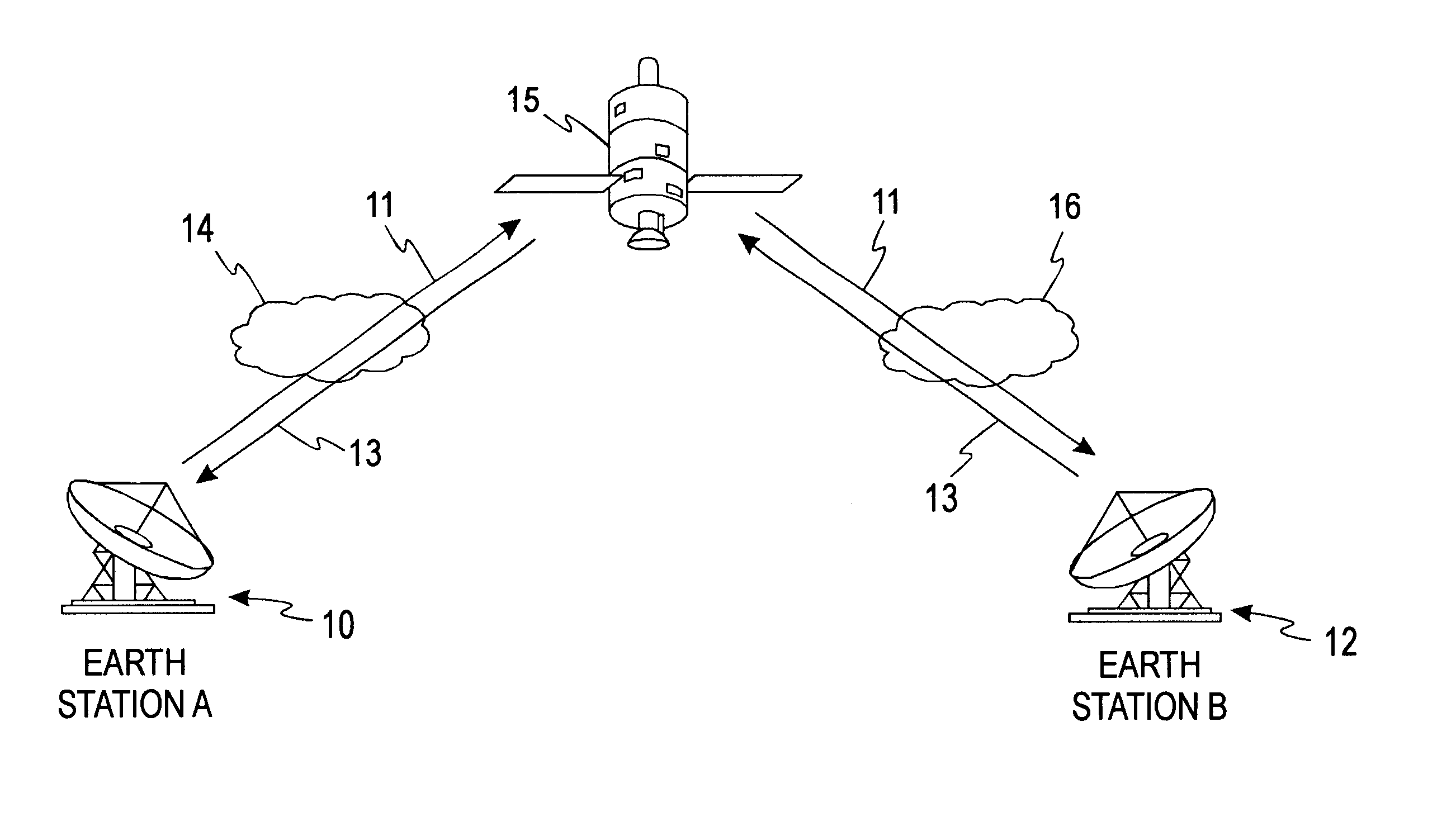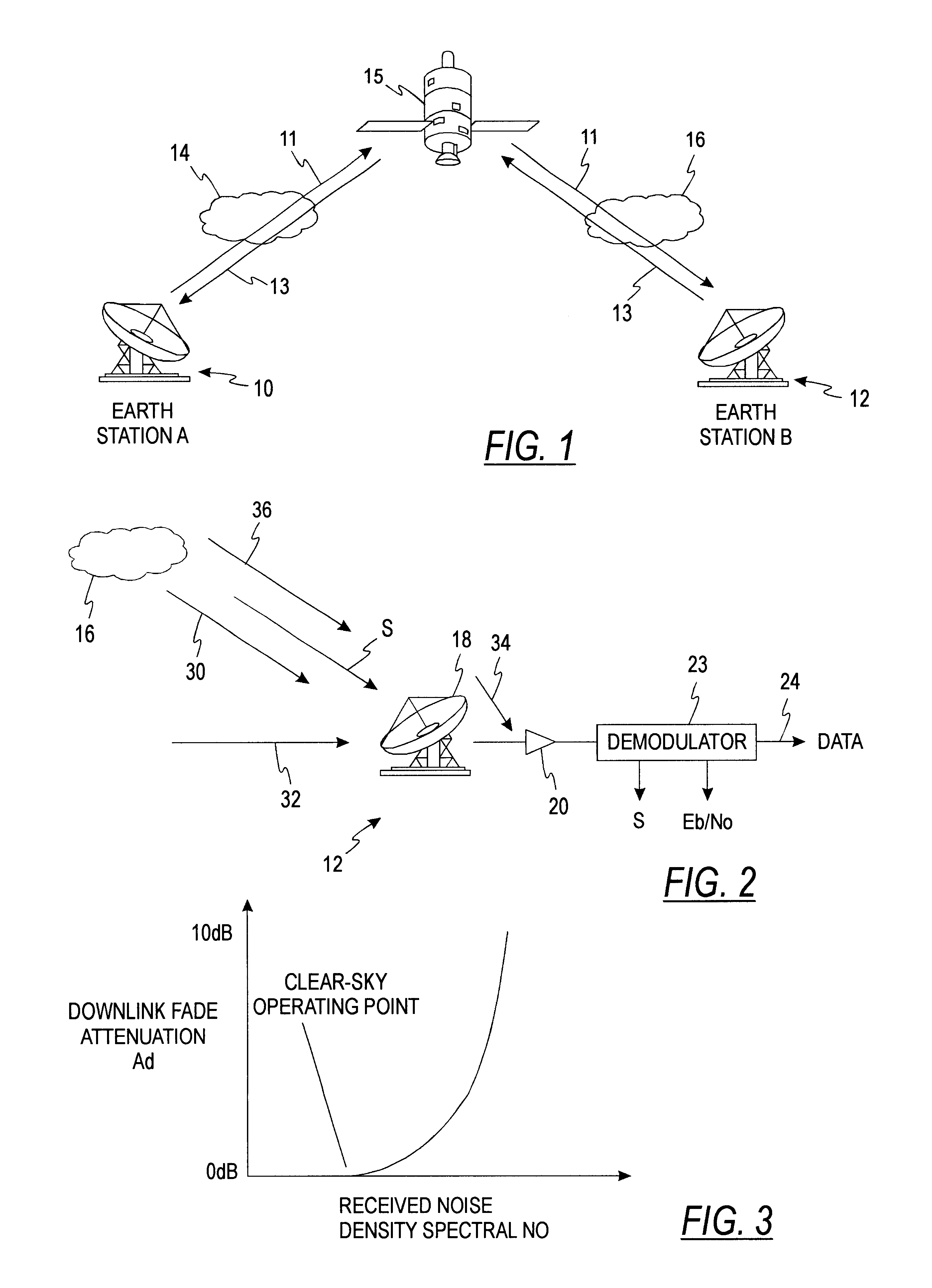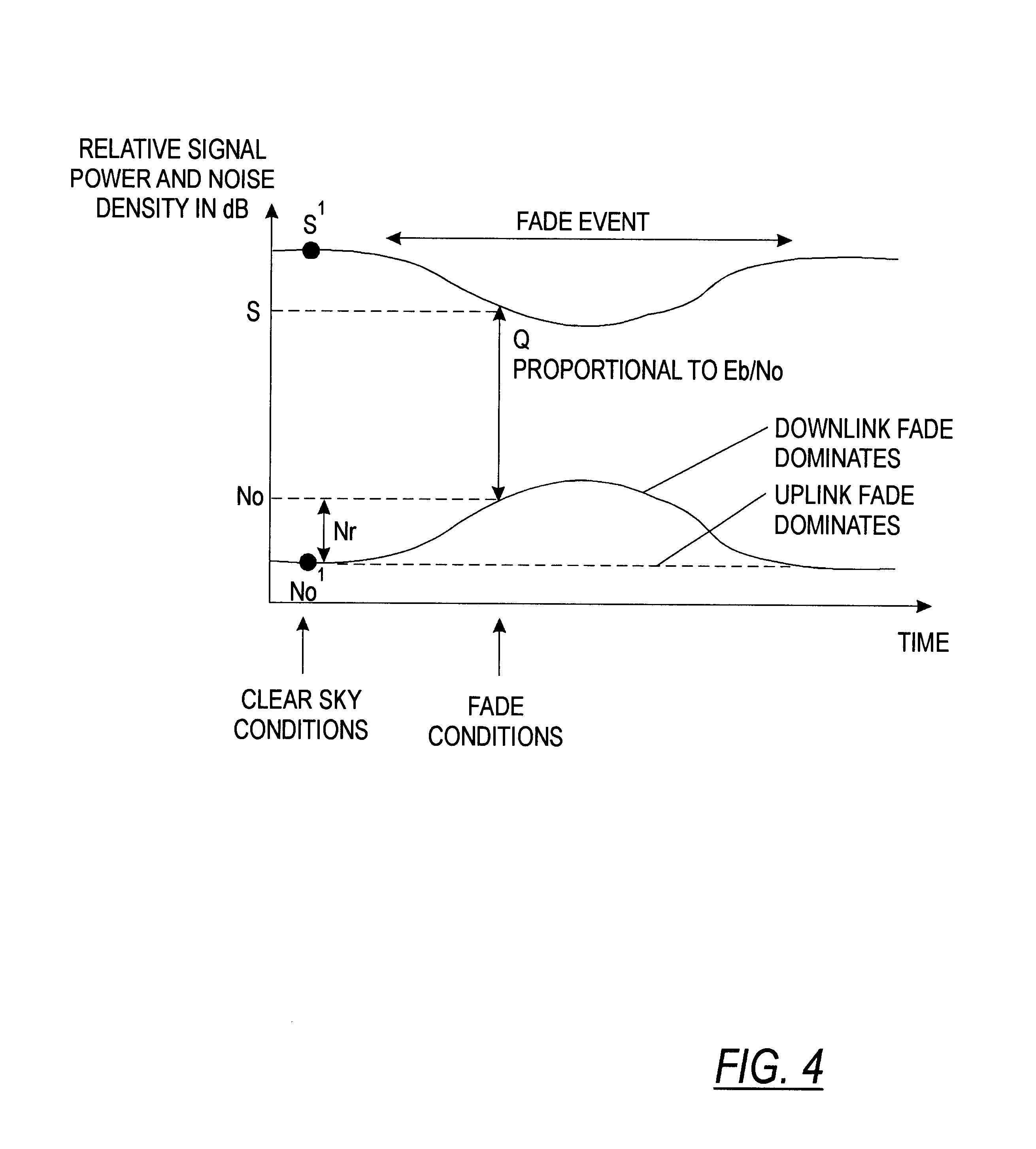Method and system for compensating for atmospheric fading in a communications system
a communication system and atmospheric fading technology, applied in the field of methods and systems for compensating for atmospheric fading in the communications system, can solve the problems of inability to achieve the method c in a network of two stations, and the fading on the downlink path should not be compensated by increasing transmit power, so as to prevent accidental overload of the satellite transponder
- Summary
- Abstract
- Description
- Claims
- Application Information
AI Technical Summary
Benefits of technology
Problems solved by technology
Method used
Image
Examples
Embodiment Construction
Referring to FIG. 5, earth station A 10 has a modulator and transmitter 40 equipped with means for accepting commands over a service channel 42 to adjust the transmit power, and transmits a signal at a frequency of e.g. 14.2 GHz at its antenna 44. The transmitted signal is attenuated by fade conditions 14, local to earth station A, by the amount A.sub.u. The satellite 15 receives the uplink signal, amplifies it, shifts its frequency to about 12 GHz (e.g., from 14.2 GHz to 11.9 GHz), and re-transmits it toward earth. The satellite 15 also adds noise of various sources, including its own receiver noise and intermodulation products from other signals in the transponder. The power of the signal at the satellite transponder output is designated S.sub.T. This signal passes through fade attenuation A.sub.d (16), which is local to earth station B (12).
Earth station B receives the signal with its antenna 18, amplifies (20) and frequency-converts it, and demodulates. The demodulator 23 in ear...
PUM
 Login to View More
Login to View More Abstract
Description
Claims
Application Information
 Login to View More
Login to View More - R&D
- Intellectual Property
- Life Sciences
- Materials
- Tech Scout
- Unparalleled Data Quality
- Higher Quality Content
- 60% Fewer Hallucinations
Browse by: Latest US Patents, China's latest patents, Technical Efficacy Thesaurus, Application Domain, Technology Topic, Popular Technical Reports.
© 2025 PatSnap. All rights reserved.Legal|Privacy policy|Modern Slavery Act Transparency Statement|Sitemap|About US| Contact US: help@patsnap.com



